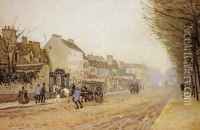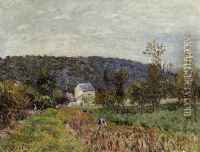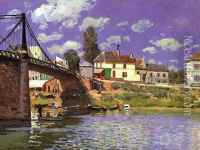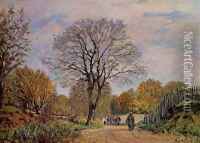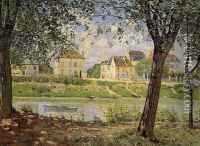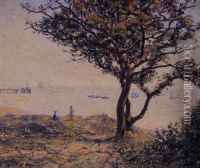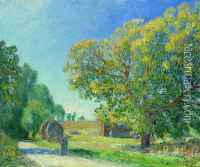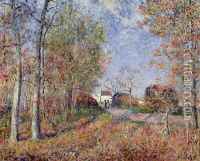Alfred Sisley Paintings
Alfred Sisley was a British-born French Impressionist painter who is often overshadowed by his more famous contemporaries like Claude Monet and Pierre-Auguste Renoir. Nevertheless, his contribution to the Impressionist movement was significant. Sisley was born on October 30, 1839, in Paris to wealthy English parents. Despite his family's expectations that he would pursue a career in commerce, Sisley was drawn to art and eventually enrolled at the École des Beaux-Arts in Paris in 1862.
It was there he met fellow artists Monet and Renoir, forming friendships that would significantly influence his artistic direction. Sisley's work almost exclusively focused on landscapes, capturing the changing seasons, light, and atmosphere with a delicate sensitivity. Unlike some of his peers, Sisley remained committed to the plein air method of painting, creating his works outdoors to capture the essence of the scene before him. While his initial works were influenced by earlier masters like Jean-Baptiste-Camille Corot, he later developed a lighter palette and looser brushwork that became characteristic of Impressionism.
Financially, Sisley struggled for much of his life. Despite the quality of his work, he did not achieve significant commercial success during his lifetime. The Franco-Prussian War of 1870-1871 and the subsequent upheaval also had a detrimental effect on his situation, as did the death of his father in 1871, which left him without financial support.
Sisley's dedication to his art never wavered, and he continued to paint prolifically. His later years were marked by poverty, and he moved frequently within the areas west of Paris, searching for inspiring landscapes and affordable living. Some of his most notable works from this period include 'Flood at Port-Marly' and 'Bridge at Villeneuve-la-Garenne'.
Alfred Sisley died of throat cancer on January 29, 1899, in Moret-sur-Loing, where he had spent his last years. Although he was British by birth, he spent almost his entire life in France and applied for French citizenship shortly before his death. Today, Sisley's paintings are celebrated for their tranquil beauty and contribution to the Impressionist movement. His works are held in many major museums around the world, and his reputation as a master of landscape painting continues to grow.



